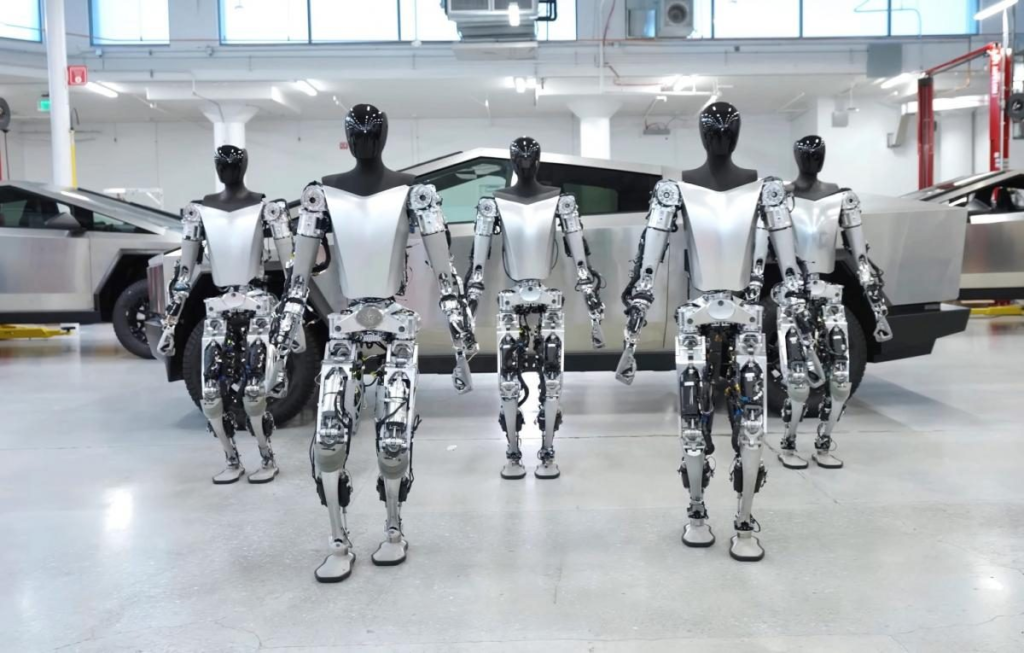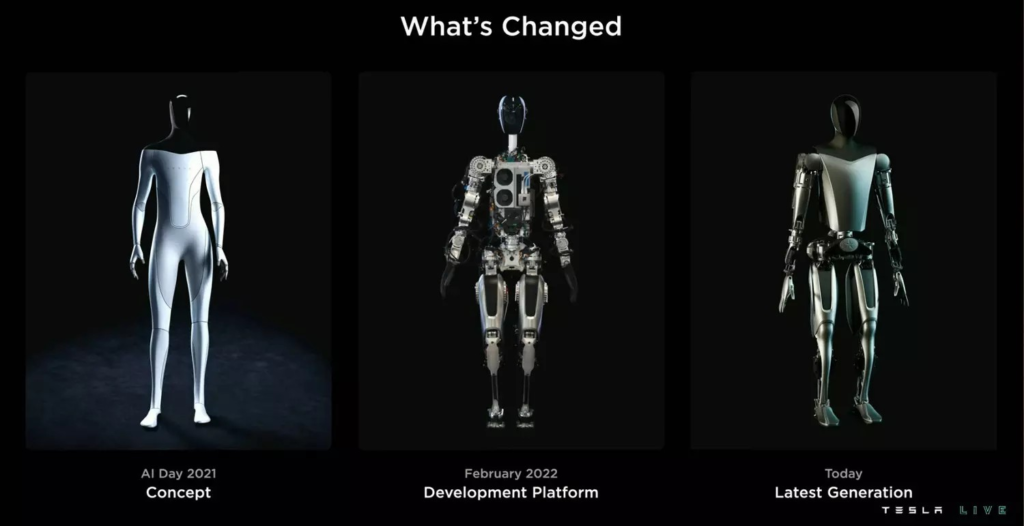The rapid advancement of artificial intelligence and robotics has brought us closer to a future once relegated to the realms of science fiction. Just last fall, in September, Elon Musk unveiled prototypes of humanoid robots, and today, he’s committed to refining and educating these AI-driven creations. These robots have come a long way from their initial designs, now capable of object recognition and human-like movements. Musk, in essence, plays the role of a teacher, guiding their development much like a parent nurtures a child. However, when these machines attain a level of intellectual maturity, what might the consequences be, and could they pose a threat to humanity, reminiscent of the dystopian world portrayed in “I, Robot” or Tesla Bot?

The Current State of Humanoid Robots:
Elon Musk’s humanoid robots are designed to mimic human movements and perform tasks that can range from simple to complex. They have made substantial progress in recognizing and interacting with objects in the environment, a testament to the advancements in artificial intelligence and machine learning.
Elon Musk’s Vision:
Musk’s vision for these robots extends beyond their physical capabilities. He aims to make them adaptable and trainable, envisioning a future where they can be assigned tasks ranging from menial chores to more specialized roles. Musk often compares their development to raising and educating a child, nurturing them to achieve their fullest potential.

The Potential Implications:
While the idea of humanoid robots working alongside humans might sound promising, it raises several thought-provoking questions and concerns:
Labor Market Disruption: One of the immediate concerns is the potential displacement of millions of workers. If these robots can perform tasks as efficiently as humans, numerous industries may choose automation over human labor, leading to significant job displacement.
Ethical Considerations: As robots become more advanced and capable of making independent decisions, ethical dilemmas arise. How do we ensure that they make morally sound choices? Can we imbue them with a sense of ethics?
Security and Control: With advanced AI, ensuring that these robots do not fall into the wrong hands or become a security threat is paramount. Robust cybersecurity measures and strict regulations will be necessary.
Human-Robot Interaction: Ensuring that these robots can seamlessly and safely interact with humans is a challenge. Avoiding accidents and misunderstandings between humans and robots will be crucial.
Intellectual Maturity: The most profound concern is what happens when these machines achieve intellectual maturity. Could they become self-aware and harbor desires or intentions of their own? The potential consequences of such a scenario could be far-reaching.

The Path Forward:
Elon Musk’s foray into humanoid robots is undeniably exciting, yet it demands careful consideration of its implications. As we continue to progress in the development of these AI-driven creations, it is vital to establish clear guidelines, regulations, and ethical frameworks to ensure that they serve humanity’s best interests. While the future holds great promise, it also calls for vigilance to safeguard against unintended consequences and risks as we navigate the uncharted territory of human-robot coexistence.
The Rise of Humanoid Robots: Elon Musk’s Vision and Its Potential Implications
In the wake of Elon Musk’s vision for humanoid robots, it’s worth exploring the current landscape of humanoid robots and their characteristics, manufacturers, and availability in the market.
1. Boston Dynamics’ Atlas:
- Manufacturer: Boston Dynamics
- Characteristics: Atlas is a highly advanced bipedal robot known for its agility and versatility. It stands around 5.8 feet tall, boasts 28 joints for exceptional mobility, and is equipped with advanced sensors for navigation and balance. Atlas can perform complex movements, including backflips, and has demonstrated the ability to navigate challenging terrains.
- Availability: While Boston Dynamics has made significant advancements with Atlas, it is primarily used for research and development and is not available for consumer purchase.
2. SoftBank Robotics’ Pepper:
- Manufacturer: SoftBank Robotics
- Characteristics: Pepper is a humanoid robot designed to interact with humans. Standing around 4 feet tall, Pepper is equipped with a touchscreen display and various sensors to perceive and respond to emotions. It has found applications in customer service and education, engaging with people in public spaces, and offering information and assistance.
- Availability: Pepper is available for purchase or lease in specific markets and is used in various commercial settings.
3. Hanson Robotics’ Sophia:
- Manufacturer: Hanson Robotics
- Characteristics: Sophia is a social humanoid robot known for its human-like appearance and conversational abilities. It uses AI and facial recognition technology to make eye contact, recognize people, and engage in conversation. Sophia has been showcased at numerous events and has garnered significant media attention.
- Availability: Sophia is primarily a demonstration and research robot, and while it has made public appearances, it is not commercially available for personal use.
4. Toyota’s T-HR3:
- Manufacturer: Toyota
- Characteristics: The T-HR3 is a humanoid robot designed for safe and intuitive remote operation. It boasts a highly flexible design with 32 points of articulation, allowing it to mimic human movements. It’s primarily intended for applications in healthcare, disaster response, and research.
- Availability: The T-HR3 is not available for personal use but is employed in research and development settings.
5. UBTECH’s Walker:
- Manufacturer: UBTECH
- Characteristics: Walker is a bipedal robot with human-like features. It can perform a range of movements and tasks, such as dancing, yoga, and carrying objects. It is designed with human-robot interaction in mind and has applications in entertainment and research.
- Availability: While UBTECH has developed advanced robots like Walker, they are not widely available in the consumer market but are used in specific research and development scenarios.
It’s important to note that many of these humanoid robots are still in the research and development phase or are being deployed for specialized purposes. As technology continues to advance, we can expect to see more humanoid robots with a broader range of applications. While these robots hold great potential, it’s imperative to consider the ethical, regulatory, and societal implications that arise as we integrate them into our lives and workplaces.




2 thoughts on “The Rise of Humanoid Robots: Elon Musk’s Vision and Its Potential Implications”